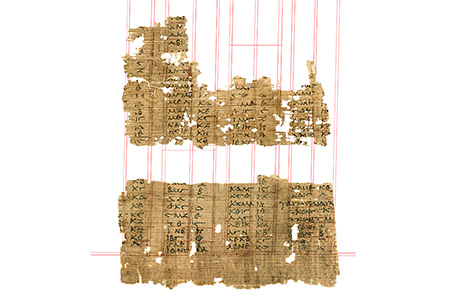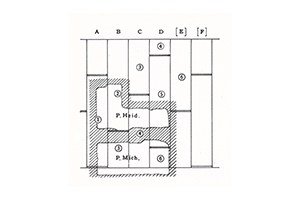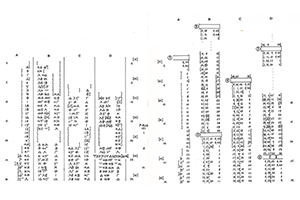Working with Papyri

- Astronomical table for the calculation of the longitudes of the planet Mars.
- P.Heid. Inv. G 4144 + P. Mich. inv. 924: reconstruction by Alexander Jones.
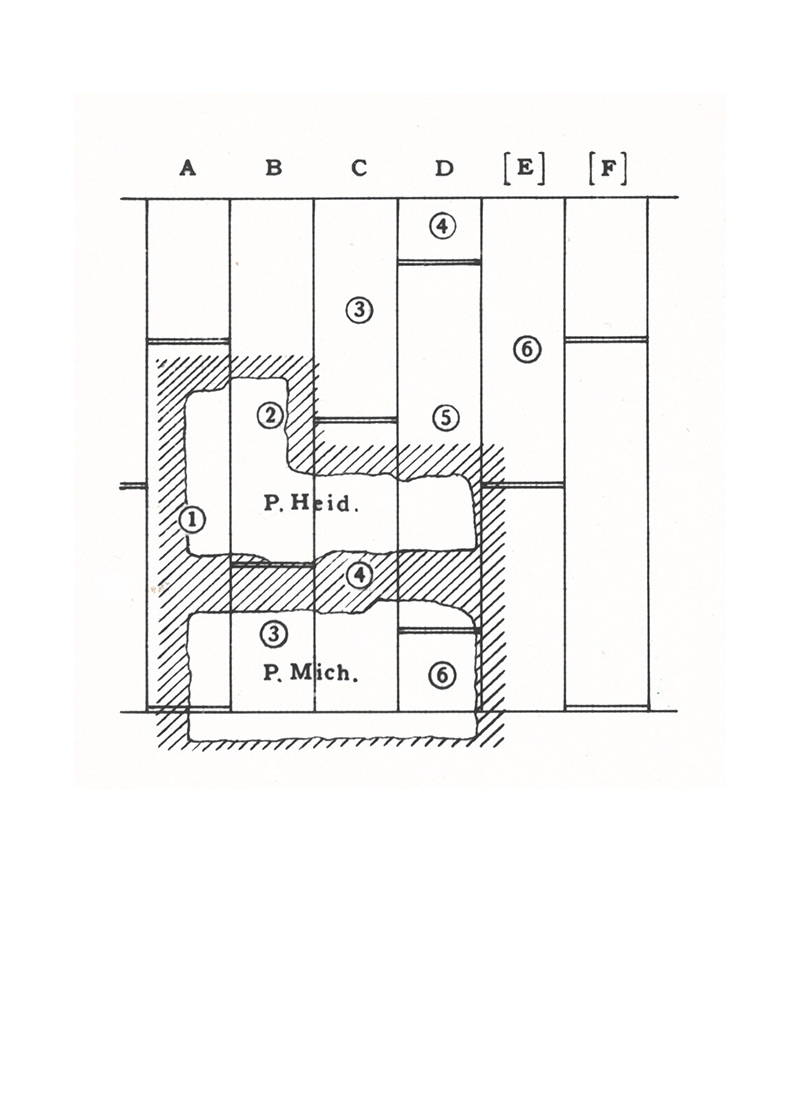
- Astronomical table for the calculation of the longitudes of the planet Mars.
- P.Heid. Inv. G 4144 + P. Mich. inv. 924: reconstruction by Otto Neugebauer.
- Otto E. Neugebauer Papers (1949-1984), folder P. Mich. 151, University of Michigan Library, Papyrology Collection.
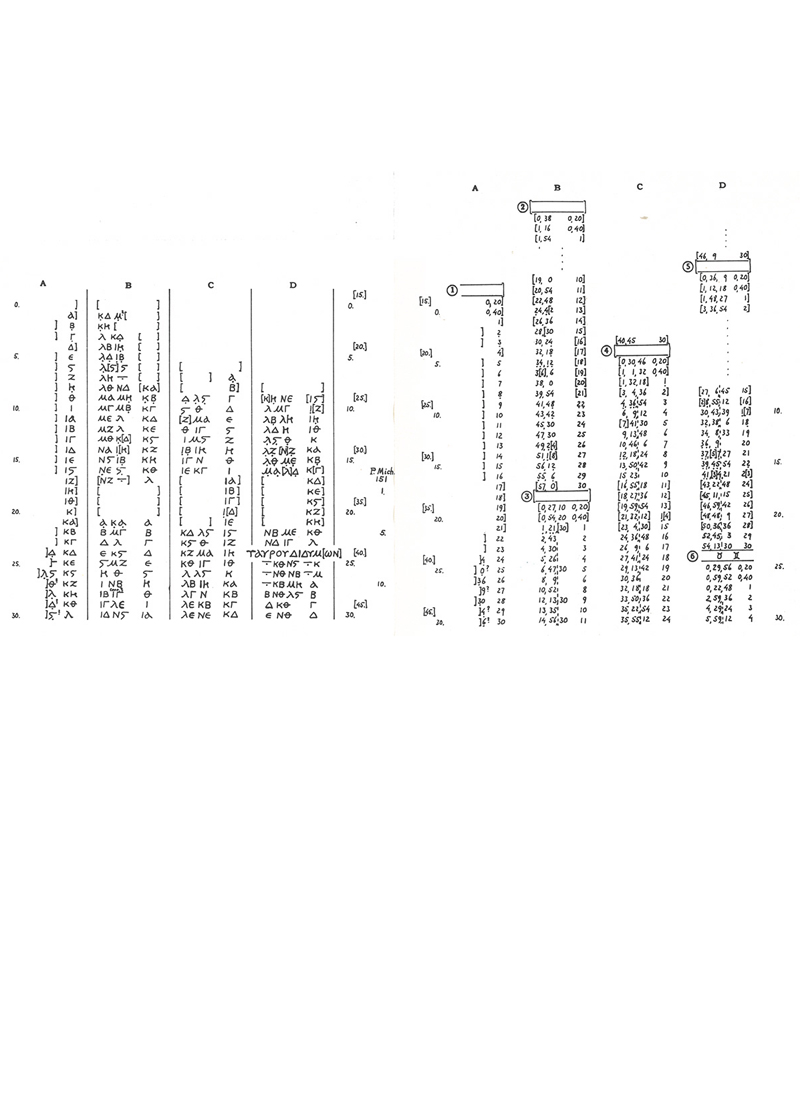
- Astronomical table for the calculation of the longitudes of the planet Mars.
- P.Heid. Inv. G 4144 + P. Mich. inv. 924: transcription and “translation” into six numerical tables by Otto Neugebauer.
- Otto E. Neugebauer Papers (1949-1984), folder P. Mich. 151, University of Michigan Library, Papyrology Collection.
This papyrus fragment joins another fragment in the Heidelberg Collection (P.Heid. Inv. G 4144) (see the first image). This is not an uncommon case. Since different European institutions in the late 19th and early 20th century wanted to build their own papyrological collections, they often bought their pieces on the Egyptian antiquities market, which was legal at this time. Antiquities dealers often broke up papyrus manuscripts in order to sell them to multiple institutions, causing pieces belonging to the same “book” (i.e., a papyrus roll or codex) to end up in different collections.
Scholars working on editions of papyri thus often have to join pieces belonging to different collections on the basis of paleographical similarities and/or content. This is the case with our papyrus, which was acquired in June 1922 from Nahman through the British Museum (lot IX, no. 8: “astronomical tables; with lines ruled in red ink; 3rd cent. (?)”). This also explains why these two fragments belonging to the same document are now split between different collections. In 1960 Neugebauer proved that the two fragments belonged to the same text and joined them, as is clear from his own reconstruction shown here (see the second image).
In fact, joining this type of tables is relatively easy as we know which data to expect because the tables in the papyrus all follow a fixed pattern, with the second column always giving the fractions 1/3 and 2/3 (in base 60) followed by the whole numbers from 1 through 30, and the first column giving the corresponding multiple of the synodic arc divided by 30. Hence a trained scholar can easily reconstruct these astronomical tables or, as in this case, join the two pieces that once belonged to the same document.
In the third image, we can see, on the left, Neugebauer’s transcription of the papyrus and, on the right, the same text “translated” into six numerical tables, with the symbols for Taurus and Gemini in the heading of the last column. Translating Greek astronomical texts into modern numerical notations is a way to make the mathematical or astronomical sense clearer, as we are used to the Arabic notation. The Greeks, however, used a different system, indicating numbers with the letters of the alphabet: the first 9 letters were used to indicate 1-9, the next 9 letters for 10 to 90, the third nine letters for 100-900.
